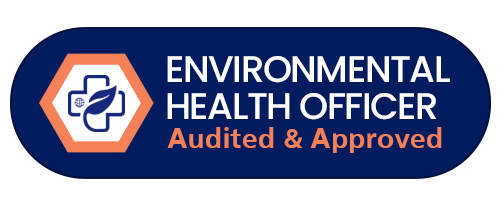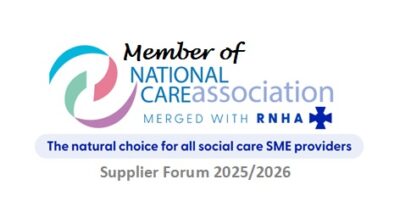Awareness of Equality, Diversity and Human Rights: Online Course for Residential Care Home Staff
Awareness of Equality, Diversity and Human Rights: Online Course for Residential Care Home Staff
Recent and current events are making us all more aware of the importance of understanding the issues of equality, diversity and human rights. To help achieve equality and diversity in the workplace, including residential care homes and other health and social care settings, there is government legislation in place that is supported by policies and strategies across the NHS, at a local trust level and in private health and social care organisations. See the Equality Act 2010 (Easy Read version).
Residential care homes and other health and social care organisations must work to:
- Eliminate discrimination, harassment, victimisation, and any other conduct prohibited by or under the Equality Act 2010
- Advance equality of opportunity between people who share protected characteristics and people who do not share it
- Foster good relations between people who share protected characteristics and people who do not share them, by promoting understanding and tackling prejudice.
Our one-hour residential care home training course – Awareness of Equality, Diversity and Human Rights – gives an overview of what residential care workers need to know about each issue. It is also suitable for staff in other health and social care settings.
Learners will be able to understand the importance of language and communication, the impact of legislation, the benefits of equality and diversity, and understand discrimination.
Read on to find out more about equality, diversity and human rights skills for residential care staff.
Important definitions
What is equality?
The goal is to create a fair society where everyone can be involved and have equal opportunities. Legislation exists that addresses discrimination based on membership of a particular group. Equality is about allowing equal access to services.
What is discrimination?
Discrimination is treating people less fairly than other groups or people. There are several types of discrimination:
- Direct discrimination – when a person is treated less favourably than another because they belong to a particular group.
- Indirect discrimination – when a rule, condition, practice, or policy applies to everyone, but disadvantages people who share a protected characteristic.
- Perceptive discrimination – directly discriminating against someone because others believe that they possess a protected characteristic, even if this is not true.
- Associative discrimination – directly discriminating against a person because they are associated with another person with a protected characteristic.
- Harassment – unwanted conduct related to a protected characteristic which has the purpose of violating a person’s dignity or creating a humiliating, intimidating, or offensive environment for that person.
- Victimisation – when an individual is treated unfairly or punished because they have made a complaint, are believed to have made a complaint, or have supported someone who made a complaint.
There is zero tolerance of discrimination towards staff members in the health, residential and social care sector. Treatment may be withdrawn from a patient if they openly discriminate against a member of staff due to their sexual orientation, colour, ethnicity, disability, or religion.
What are ‘protected characteristics’?
The Equality Act 2010 ensures that Individuals are protected from discrimination on the basis of ‘protected characteristics’. These include:
- Age
- Disability
- Gender reassignment
- Marriage and civil partnerships
- Sex
- Sexual orientation
- Religion or beliefs
- Pregnancy and maternity
What is diversity?
Diversity means recognising, valuing, and taking account of people’s differences. This includes their knowledge, background, needs, experiences, and skills. Organisations should strive to create work cultures and practices that respect and value differences for the benefit of the organisation and its people. Through diversity, we can encourage and use our differences to create a cohesive community and workforce in residential care.
What is identity?
Identity is the self-perception and distinct personality of a person at any stage in their life. Your identity defines who you are to others and can relate to your gender, sexual orientation, age, ethnicity, or culture. Because of this, it is important to recognise that not everyone identifies with one type of identity.
Aspects of diversity and equality for residential care, health and social care
Diversity and equality address many issues, as well as the protected characteristics recognised in the Equality Act (2010). These include:
- Age
- Disability
- Gender reassignment
- Marriage and civil partnerships
- Pregnancy and maternity
- Race
- Religion
- Sexual Orientation
- Sex or gender
Using power responsibly
Power in health, residential and social care settings must be used responsibly and staff must be aware of the impact power can have on those around them, such as colleagues and service users.
Examples of the misuse of power include:
- Bullying
- Harassment
- Oppression
- Prejudice
- Exclusion.
Should you say something?
Inappropriate comments should be challenged, but it is unwise to believe you should always do something, especially if you could be injured or threatened or are not quite sure that you heard the comment correctly. Not doing something might make other believe you accept or support the behaviour. However, in most instances you can do something. It could be as simple as saying you are not pleased with the behaviour. You may even need to involve your line manager.
Workforce profile
An organisation can ask staff for personal information, including sexual orientation. This allows the organisation to build a profile of its employees so it can ensure that it is representative of a diverse community and is able to treat its staff equally.
Disabilities in the workforce
Many residential care and health and social care organisations employ low numbers of people with visible disabilities. Some managers think there will be lots of adjustments to help make the workplace acceptable for a person with a disability, or that the person will often be sick. It may be that the organisation or managers are not aware of the financial and other assistance available from Access to Work and Jobcentre Plus. Experience shows that may pre-conceived notions about hiring a person with a disability are not true.
If you’d like your residential care staff to gain a full understanding of this topic and earn their CPD point, visit the awareness of equality, diversity and human rights online learning course. Here’s a summary of what’s involved:
Key facts about the online equality, diversity and human rights course for residential care workers
Who this is for: Health, residential and social care workers
Time required: 1 hour
CPD points gained: 1
Learner will be able to:
- Understand the definition of equality and diversity
- Understand what discrimination is, its nature and
- process
- Show increased awareness of discrimination
- Understand why communication and language are
- important
- Describe relevant UK legislation, policies, and strategies
- Understand how to use power responsibly









